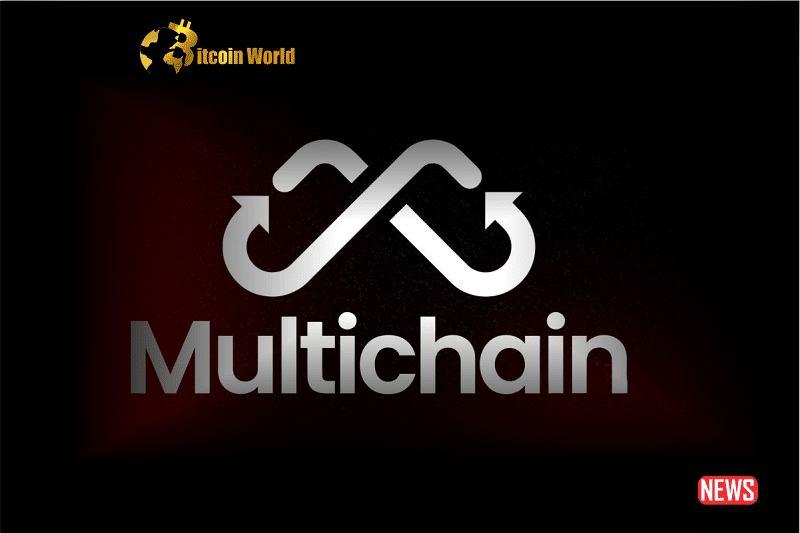The crypto world is buzzing with unanswered questions following the multi-million dollar exploit of Multichain, a cross-chain bridge protocol. Imagine waking up to find over $125 million vanished – that’s the stark reality for users affected by this event. But was it a sophisticated external hack, or something far more unsettling? Blockchain security firm Chainalysis is raising eyebrows, suggesting a potential inside job or even a deliberate rug pull. Let’s dive into the details and explore the evidence.
The Disappearance Act: Inside Job or Coincidence?
Chainalysis’s analysis points to a worrying possibility: the unauthorized withdrawals might stem from compromised administrator keys. Think of these keys as the ultimate master passwords. The fact that they were used to drain such a significant amount raises immediate red flags. But what makes this scenario even more suspicious?
- Missing CEO: Adding fuel to the fire is the reported disappearance of Multichain’s CEO. This absence coincides with the exploit, prompting many to connect the dots.
- Internal Troubles: Before the exploit, Multichain was reportedly grappling with internal issues and technical difficulties. Could these internal struggles have created vulnerabilities or even motivated someone from within?
Chainalysis openly suggests the exploit could be an “inside job or rug pull orchestrated by insiders.” The compromise of those critical administrator keys strongly hints at someone with privileged access being involved.
Multichain’s Checkered Past: Were There Warning Signs?
Multichain’s technology relies on a multi-party computation (MPC) system, which is conceptually similar to a multi-signature wallet. The idea is that multiple parties need to agree for transactions to occur, enhancing security. However, Multichain’s journey hasn’t been entirely smooth.
- Transaction Delays: Users have reported experiencing delays in transaction processing.
- Technical Glitches: The platform has faced various technical difficulties.
- Binance’s Decision: These issues led to Binance, a major cryptocurrency exchange, discontinuing support for Multichain’s bridged tokens.
Chainalysis highlights these past problems as potential indicators of underlying instability within Multichain, making the possibility of an inside job seem more plausible.
Chainalysis Speaks Out: Rug Pull on the Horizon?
Chainalysis doesn’t mince words, describing the exploit as a “possible rug pull.” The theory is that the compromised MPC keys, the very foundation of the platform’s security, may have been intentionally misused. While the investigation is ongoing, the prevailing sentiment among experts and analysts leans towards the likelihood of insider involvement, given the confluence of recent events and existing issues.
The Plot Thickens: Frozen Assets and Unexplained Movements
The story doesn’t end with the initial $125 million loss. Blockchain investigators have observed further suspicious movements of Multichain tokens. The Multichain Executor address, a key component of the platform, has been actively draining funds from various addresses across different blockchains. This ongoing activity raises even more questions about the nature and scope of the exploit.
In a swift response to the crisis, stablecoin issuers Circle and Tether took decisive action, freezing over $65 million worth of assets linked to Multichain. Interestingly, Chainalysis points out that the exploiter didn’t attempt to swap out centrally controlled assets like USDC, which can be frozen by the issuing company. Why not? This detail adds another layer of intrigue to the investigation. Was the goal simply to drain as much value as possible, or was there a more nuanced strategy at play?
Key Takeaways and Lingering Questions
The Multichain exploit serves as a stark reminder of the risks inherent in the world of decentralized finance (DeFi). Here are some key points to consider:
- Centralized Control Concerns: The incident highlights the vulnerabilities associated with centrally controlled assets and administrator keys within ostensibly decentralized platforms.
- Security Audits and Transparency: The importance of rigorous security audits and transparent operational practices cannot be overstated. Users need to be able to assess the risks involved in using these platforms.
- The Human Element: Even with sophisticated technology, the human element remains a significant factor in security. Internal controls and trust are crucial.
- Ongoing Investigation: The investigation is still underway, and further developments are expected to shed more light on the exact nature of the exploit and those responsible.
What’s Next for Multichain and Its Users?
The future of Multichain hangs in the balance. Can the platform recover from this significant breach of trust? What measures will be put in place to prevent similar incidents from happening again? And most importantly, what recourse do affected users have? These are critical questions that need answers in the coming weeks and months.
The Multichain saga underscores the constant need for vigilance and robust security measures in the ever-evolving landscape of cryptocurrency and DeFi. Whether it was an external attack or an inside job, the consequences are significant, leaving a trail of unanswered questions and highlighting the inherent risks in this nascent industry.
Disclaimer: The information provided is not trading advice, Bitcoinworld.co.in holds no liability for any investments made based on the information provided on this page. We strongly recommend independent research and/or consultation with a qualified professional before making any investment decisions.


